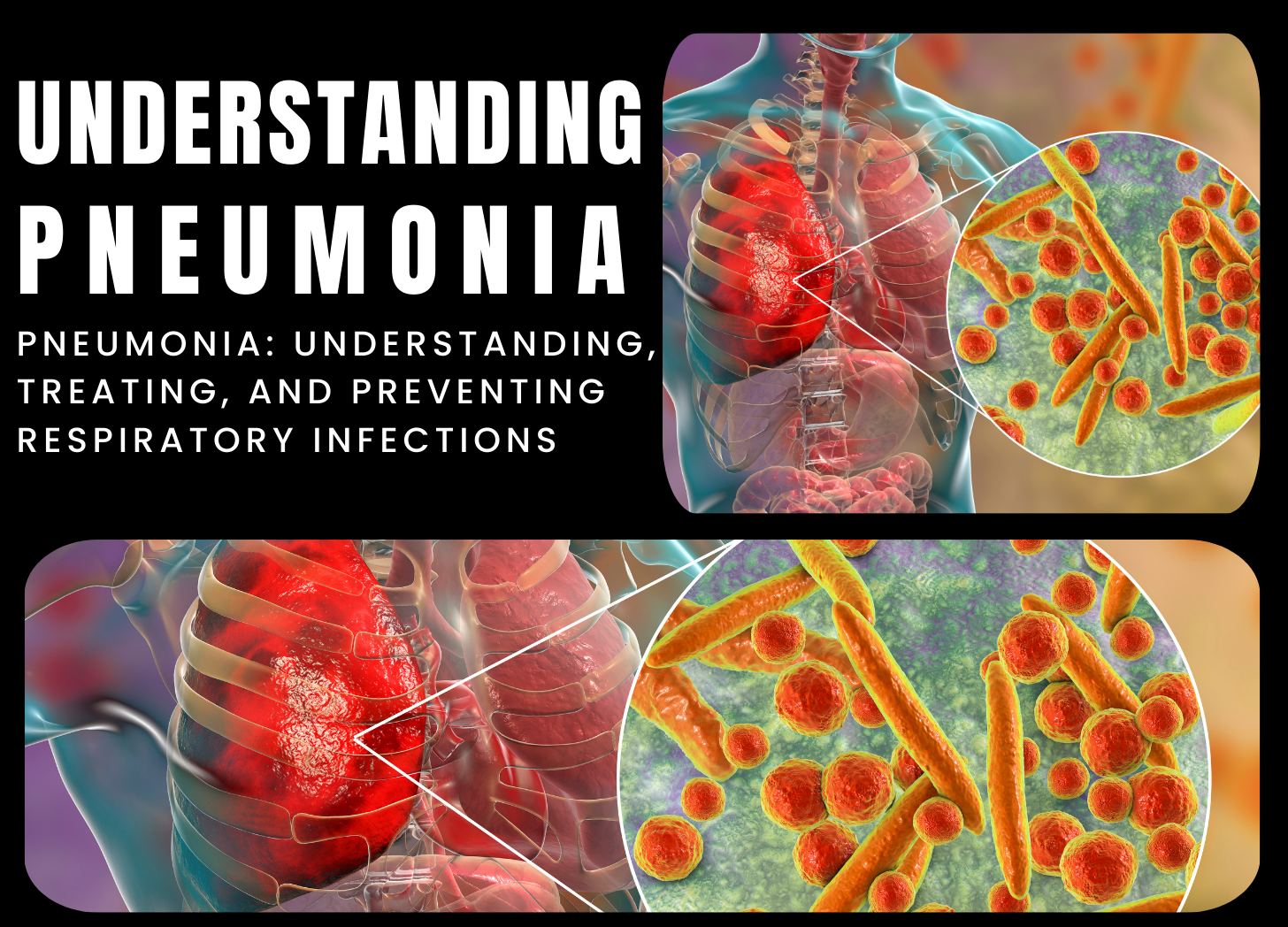Contact Us
Contact Us

Pneumonia is a frequent and potentially deadly respiratory infection of the lungs. Bacteria, viruses, fungi, and other microbes can all cause inflammation and fluid buildup in the lungs’ air sacs. This illness can range from moderate to severe and may necessitate medical treatment, depending on the individual’s age, overall health, and the causative cause.
Bacterial infection is a leading cause of pneumonia, with Streptococcus pneumoniae being the most prevalent bacterium. Other bacteria, including Haemophilus influenzae and Mycoplasma pneumoniae, can also cause pneumonia. Influenza viruses, respiratory syncytial virus (RSV), and adenoviruses are the most common causes of viral pneumonia. Fungal pneumonia can also occur in those with weaker immune systems, such as HIV/AIDS patients or those receiving chemotherapy.
Pneumonia symptoms can vary based on the origin, severity, and the patient’s overall condition. Common indications and symptoms include a cough that produces phlegm or pus, fever, chills, difficulty breathing, rapid breathing, chest pain while breathing or coughing, weariness, and confusion, particularly in elderly persons.
Pneumonia is often diagnosed through a physical examination, a review of the patient’s medical history, and diagnostic tests. Healthcare personnel may listen to the lungs using a stethoscope to detect aberrant sounds, order chest X-rays to see lung abnormalities, and collect sputum samples for laboratory examination to determine the causative agent.
Treatment for pneumonia is determined on the underlying cause and severity of the infection. Antibiotics are typically used to treat bacterial pneumonia, however antivirals may be administered for viral pneumonia. Antifungal medications are required while treating fungal pneumonia. Supportive therapy, such as rest, appropriate hydration, and over-the-counter pain medications for fever and discomfort, can help reduce symptoms.
Preventive strategies play an important role in lowering the risk of pneumonia. Vaccines are available to protect against bacterial and viral diseases that are typically associated with pneumonia, such as the pneumococcal vaccination and the influenza vaccine. Good hygiene, such as frequent handwashing, avoiding direct contact with ill people, and covering one’s mouth and nose when coughing or sneezing, can all assist to prevent the spread of respiratory infections.
To summarize, pneumonia is a respiratory illness that causes inflammation in the lungs and is frequently caused by bacteria, viruses, fungus, or other microbes. Early detection of symptoms, rapid medical examination, and proper treatment are critical for successfully managing pneumonia and avoiding complications. Individuals can prevent pneumonia by learning about its causes, symptoms, and treatment choices.
References:
1.Centers for Disease Control and Prevention. (2022). Pneumonia. Retrieved from https://www.cdc.gov/pneumonia/index.html
2.Mayo Clinic. (2022). Pneumonia. Retrieved from https://www.mayoclinic.org/diseases-conditions/pneumonia/symptoms-causes/syc-20354204
Post a Comment